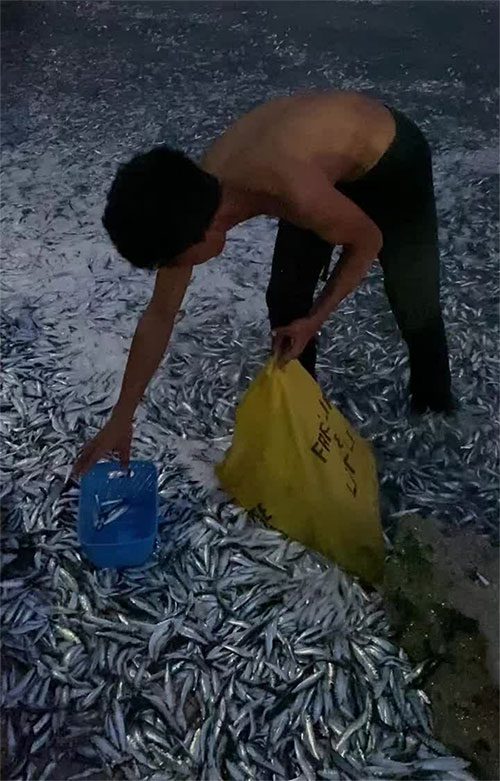A massive school of sardines ran aground on an island in the Philippines approximately 48 hours before a strong earthquake shook the ocean floor nearby.
(Video: Mark Achieval Ventic Tagum)
Countless sardines, likely numbering in the millions, recently washed ashore on an island in the Philippines, turning the coastal area into a silver carpet as the bodies of dead fish covered the sandy beach. Approximately 48 hours later, the region experienced a strong earthquake, sparking speculation that the fish might have sensed the approaching natural disaster and fled to shallow waters. However, local experts stated that the two events are unrelated and that many other factors contributed to this unusual mass stranding, according to Live Science.
The disoriented fish began swimming ashore early in the morning of January 7 in the coastal area of Maasim in Sarangani province at the southern tip of Mindanao Island. Images captured by residents throughout the night showed the shimmering school of sardines spread across the beach, struggling amidst the waves as they were washed ashore.
As the sun began to rise, local residents gathered to collect the fish. On one beach, over 100 people participated, each gathering 20 – 30 kg of sardines, with one family even amassing up to half a ton of fish. If preserved properly, most of the dead fish could be consumed or sold. Some residents viewed the unusual phenomenon as “a gift from the divine,” a sign that the new year would be prosperous. However, many others warned that the mass stranding could be an ominous sign of an impending natural disaster.
At around 5 AM local time on January 9, a 6.7 magnitude earthquake occurred in the Celebes Sea, according to the U.S. Geological Survey. The epicenter was offshore, about 100 km from Maasim, igniting speculation on social media that the school of fish sensed the forthcoming earthquake. However, it is unlikely that the two natural events are connected, according to Cirilo Aquadera Lagnason Jr., a researcher at the Protected Area Management Office (PAMO) of Sarangani Bay, who was among the first to witness the stranded sardines.

Local residents collect stranded sardines.
Previous studies have not found conclusive evidence of animals’ ability to predict earthquakes, although in some cases, animals do react to minor tremors that occur before significant shaking. In this instance, Lagnason Jr. believes the most likely cause is a oceanographic phenomenon known as upwelling, where nutrients from the deep sea rise to the coastal waters, promoting phytoplankton growth. Sardines, which primarily feed on phytoplankton, swim into the shallow waters in search of food and become trapped. Similar situations have occurred in various locations throughout the Philippines. The majority of the sardines may belong to one of the six species in the herring family and are not fully mature. This could contribute to the entire school becoming disoriented.
Zenaida A. Dangkalan, a fisheries officer in Sarangani, stated that a variety of other factors could lead to the event, including an overabundance of sardines, changes in temperature or salinity of the ocean, the distribution of predators, and light pollution from residential areas. The earthquake occurring shortly after the stranding is likely coincidental. Such earthquakes occur regularly along the Ring of Fire, a seismically active area that encircles the Pacific, including the Philippines.




















































